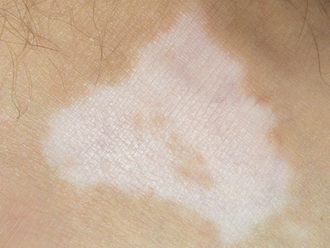
Dubai: Those who tackle obesity often take the mainstream path, mostly unaware of the alternatives. Besides, the less travelled route is usually frowned upon.
There are many age-old alternative branches of medicine that have been helping people lead healthy lives for thousands of years. The most known and established in the UAE are Ayurveda, Unani and Homeopathy.
Unlike mainstream Allopathic treatment, Ayurveda, Unani and Homoeopathy take the body nature and character of the patient (humours) before offering a remedy. There is no one cure for all in these systems, for people vary and so do their constitution.
Ayurveda, a traditional medicine administered for thousands of years in India, considers the imbalance in the metabolic activity of a tissue as the root cause of fat accumulation, according to the practitioners.
No side effects
Assessing the Deha Prakrithi (body nature) of the patient is the first step in deciding the treatment, said Dr Jomol Mariam Thomas of Al Marjan Ayurvedic Centre in Ajman.
Apart from herbal medicines, Ayurveda uses oil massages, steam bath, vamana (emesis), virechana (purgation) and low-calorie diets to "control fat metabolism".
"It's mostly a 14-day treatment programme and patients have lost up to four kilogrammes in a week," Dr Jomol said.
The best part is there are no side effects for most alternative medicines.
Homoeopathy — an alternative medicine first proposed by German physician Samuel Hahnemann in 1796 — uses highly diluted medicine preparations to treat disorders.
In homoeopathy there are 189 remedies for obesity, said Dr Rosamma Sabu Thomas of Al Balsam Homeopathy Centre in Sharjah.
The treatment, however, is decided after understanding the complete case history of the patient, she adds.
Obesity could be due to a thyroid problem or some other disease. It is important to tackle the disease first before controlling fat accumulation, she said.
Homoeopathy uses medicines, along with low-calorie diets and exercises such as brisk walking, to regulate the accumulation of fat.
Patients who have followed the programme have lost 10-12kg in three months, she says.
"Losing weight is no longer about looking good, but being healthy," Dr Rosamma said.
Unani — another age-old branch of medicine that means ‘Greek' and is widely practiced in the Middle East and India — is another effective traditional method to tackle obesity.
Lifestyle changes are vital in controlling body mass increase in people leading a sedentary life, said Dr Syed Asaduddin Ahmad of Al Hijama Alternative Medical Centre in Sharjah.
Body humours
Like Ayurveda, Unani also classifies human nature. It is based on the concepts of the four humours: Phlegm (Balgham), Blood (Dam), Yellow bile (afra) and Black bile (Sauda).
Treatment is decided after taking into account the nature of the patient. Herbal medicines in powder form, along with diet control and light exercises are some of the treatment methods in Unani.
Don't starve to cut fat, but listen to the physician and follow a healthy lifestyle, says Dr Ahmad.
Quick facts
Ayurveda1. Ayurveda, which originated in India as a stream of medicine, has its beginnings around 1500 BC.
2. Ayurveda recognises the unique constitutional differences of all individuals and therefore recommends different regimens for different types of people.
Unani
1. The basic knowledge of Unani medicine as a healing system was developed by Hakim Ibn Sina (known as Avicenna in the West) in his medical encyclopedia The Canon of Medicine (circa 1025 AD).
2. Unani medicine is based on the concepts of the four humours built on the basic Hippocratic theory, which formed the basics of modern medicine till the 19th century.
3. According to the Unani system, food items which are easily digestible should not be mixed with the food items that are digested slowly by the body, such as milk and fish, pulses and mutton.
Homoeopathy
1. Homoeopathy is based on an ipse dixit proposition formulated by Hahnemann, or the ‘law of similar'. According to this, preparations which cause certain symptoms in healthy individuals are given in diluted form to patients exhibiting similar symptoms as a remedy.
2. Homeopathic remedies are derived from natural substances. Common remedies include red onion, arnica (mountain herb) and the stinging nettle plant.













